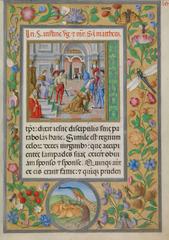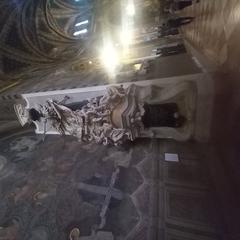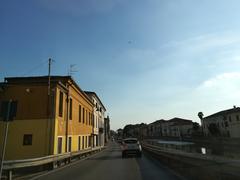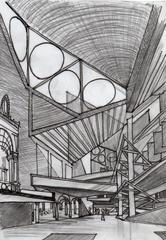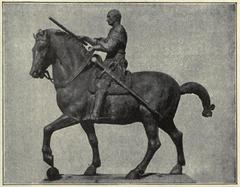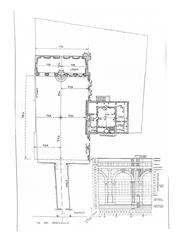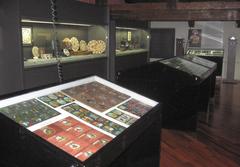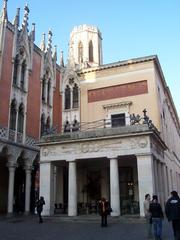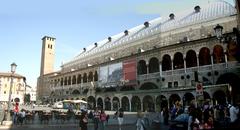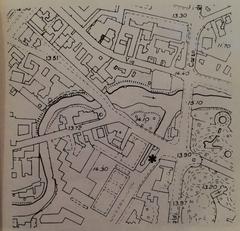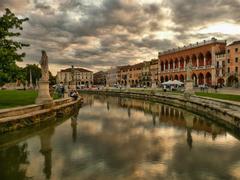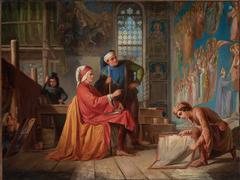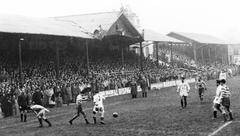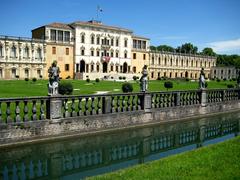Padua, Italy: Historical Sites, Visiting Hours, Tickets, and Travel Guide
Date: 14/06/2025
Introduction to Padua’s Historical Sites
Nestled in northern Italy’s Veneto region, Padua (Padova) is a captivating city where ancient history meets vibrant modern life. With roots stretching back to its founding as Patavium, Padua flourished through Roman, medieval, and Renaissance eras, leaving behind a wealth of architectural and artistic treasures. The city is home to world-renowned sites such as the Giotto-adorned Scrovegni Chapel, the spiritual Basilica of Saint Anthony, and the venerable University of Padua, founded in 1222 and associated with figures like Galileo Galilei (University of Padua).
This guide provides detailed information on Padua’s must-see historical sites, including visiting hours, ticketing, accessibility, and tips for making the most of your visit. Whether you’re drawn by the city’s medieval architecture, lively squares like Prato della Valle, or its culinary specialties such as Paduan hen in saor and spunciotti, this report will help you navigate Padua’s rich offerings (PlanetWare; Cuisine Voila).
Padua’s Catholic heritage, vibrant festivals, and thriving university and art scenes make it a multifaceted destination for all types of travelers (Sant’Antonio Basilica; Audiala). With practical travel, ticketing, and accessibility information, this guide ensures a smooth and enriching experience (Turismo Padova; My Corner of Italy).
Table of Contents
- Introduction
- History: From Ancient Patavium to Modern Padua
- Key Historical and Cultural Sites: Hours, Tickets, and Highlights
- Accessibility and Visitor Services
- Local Cuisine and Dining Recommendations
- Transportation and Getting Around Padua
- Festivals, Events, and Guided Tours
- Frequently Asked Questions (FAQ)
- Conclusion and Planning Tips
- References
History: From Ancient Patavium to Modern Padua
Padua’s legendary founding dates to 1183 BC, attributed to Trojan prince Antenor—a story immortalized by the symbolic Tomb of Antenor (University of Padua). By the 4th century BC, Padua had become an important Veneti settlement along the Bacchiglione River, thriving as a trade hub. Roman rule from 45 BC saw Padua become a municipium, with remnants of amphitheaters and bridges still traceable today.
The city’s fortunes waned under Hunnic and Lombard invasions, but by the 12th century, Padua re-emerged as a dynamic self-governing commune. Its resilience is reflected in the medieval architecture and urban design still visible in the historic center.
The 13th and 14th centuries brought both tyranny, under Ezzelino da Romano, and prosperity, under the Carraresi family, whose patronage fostered artistic masterpieces like Giotto’s frescoes in the Scrovegni Chapel (StayVibes; Audiala). In 1405, Padua came under Venetian rule, entering a period of stability and cultural growth.
After the fall of Venice in 1797, Padua was governed by Austria until its annexation to the Kingdom of Italy in 1866 (University of Padua). The 20th century brought urban expansion, resistance during WWII, and post-war renewal, shaping the lively and welcoming Padua of today.
Key Historical and Cultural Sites: Hours, Tickets, and Highlights
Scrovegni Chapel (Cappella degli Scrovegni)
Why Visit: Home to Giotto’s groundbreaking frescoes (1303–1305), the Scrovegni Chapel is a UNESCO World Heritage site and a pinnacle of Western art.
- Hours: Daily, 9:00 AM – 7:00 PM (last entry around 6:30 PM)
- Tickets: Approximately €15 for adults; discounts for under-25s and seniors. Advance online booking is mandatory due to strict visitor limits.
- Visit Duration: Timed visits (about 15 minutes inside after a pre-entry acclimatization)
- Accessibility: Partially accessible; check with the venue for details.
- Booking: Scrovegni Chapel Official Site
(PlanetWare; Audiala; Italy Heaven)
Basilica of Saint Anthony (Basilica di Sant’Antonio)
Why Visit: Padua’s iconic pilgrimage site, blending Romanesque, Gothic, and Byzantine architecture, with the tomb of St. Anthony and works by Donatello.
- Hours: Daily, 6:00 or 6:30 AM – 7:00 PM
- Tickets: Free entry; donations welcome. Some museum areas may charge a small fee.
- Accessibility: Fully accessible; assistance available upon request.
- Guided Tours: Available onsite or via local operators.
- More Info: Basilica of Saint Anthony
(PlanetWare; Sant’Antonio Basilica)
Palazzo della Ragione
Why Visit: Medieval town hall (1218), featuring the vast Salone with astrological frescoes and one of Europe’s largest unsupported roofs.
- Hours: 9:30 AM – 7:30 PM (check for seasonal variations)
- Tickets: Around €5; free for EU citizens under 18. Combined tickets available with other museums.
- Accessibility: Partial; some areas have stairs.
Prato della Valle
Why Visit: Europe’s largest square (90,000 sq m), ringed by statues and canals, and a hub for markets, festivals, and open-air events.
- Hours: Open 24/7
- Tickets: Free entry
- Accessibility: Fully accessible
University of Padua and Botanical Garden (Orto Botanico di Padova)
Why Visit: The University, founded in 1222, is one of the world’s oldest, and the Botanical Garden (UNESCO-listed) is the oldest academic garden still at its original site.
- Botanical Garden Hours: Tues–Sun, 9:00 AM – 7:00 PM (April–Sept), 9:00 AM – 5:00 PM (Oct–March); closed Mondays
- Tickets: About €6 for adults; discounts for students/seniors.
- Accessibility: Garden paths mostly accessible
Other Must-See Landmarks
- Piazza dei Signori, Piazza delle Erbe, Piazza della Frutta: Historic piazzas with daily markets and vibrant café culture (Italy Heaven).
- Padua Cathedral (Duomo) and Baptistery: Notable for Tiepolo paintings and Giusto de’ Menabuoi’s frescoes. Duomo open 8:00 AM–12:00 PM and 3:00 PM–7:00 PM; Baptistery 9:00 AM–6:00 PM. Free entry (PlanetWare).
- MUSME (Museum of the History of Medicine): Interactive exhibits on Padua’s medical history. Tues–Sun, 10:00 AM–6:00 PM. Tickets €8 (PlanetWare).
- Caffè Pedrocchi: Historic 19th-century café, open 7:30 AM–1:00 AM (Italy Heaven).
- Abbey of Santa Giustina: Benedictine abbey with relics of saints; open daily, 8:00 AM–12:00 PM and 3:00 PM–7:00 PM (PlanetWare).
Accessibility and Visitor Services
Most major sites offer good accessibility, though some medieval buildings have steps or cobblestones. Always check official websites or contact tourist information centers for tailored assistance. Wheelchair access is available at the Basilica of Saint Anthony, Prato della Valle, and key university sites.
Local Cuisine and Dining Recommendations
Padua’s cuisine reflects its Veneto roots, with a focus on local ingredients and simple, flavorful preparations (Cuisine Voila; My Corner of Italy).
Specialties to Try
- Spunciotti: Venetian-style finger foods, ideal for aperitivo (My Corner of Italy)
- Bigoli with Duck Ragù: Whole-wheat pasta with rich sauce
- Paduan Hen in Saor: Boned hen with onions, pine nuts, and raisins, marinated in sweet-sour sauce
- Polenta: Served with ragù or grilled meats (Cuisine Voila)
- Aperol Spritz: The birthplace of this classic Italian aperitif (Every Steph)
Where to Eat
- Osteria dal Capo: For Paduan hen in saor
- Ristorante La Cantina: Traditional polenta dishes
- Market stalls in Piazza delle Erbe and Piazza della Frutta: For spunciotti and local cheeses
(My Corner of Italy; Cuisine Voila)
Transportation and Getting Around Padua
Padua is easily reached by train from Venice (30 minutes), Verona, Milan, and Bologna, with four airports nearby (Turismo Padova). The city’s compact center is best explored on foot or by bicycle, with dedicated bike lanes and the Goodbike Padova bike-sharing system.
Public Transport
- Tram and Bus: Operated by Busitalia Sita Nord, covering major attractions. Tickets cost around €1.30 for 75 minutes; daily and weekly passes available (Expat Exchange; Unipd).
- Taxi: 24-hour service; best booked in advance (Turismo Padova).
- Car Sharing: Available, but note the ZTL (traffic-restricted) zone in the historic center.
- Parking: Use designated lots outside the ZTL.
- Sightseeing Bus: Hop-on, hop-off service from March to October (Turismo Padova).
Festivals, Events, and Guided Tours
Padua’s cultural calendar includes the Feast of Saint Anthony in June, the Padua Carnival, the Flower Show, and the Jazz Festival (Adventure Backpack; Overyourplace). Many attractions offer English-language guided tours—booking in advance is advised, especially for the Scrovegni Chapel.
Frequently Asked Questions (FAQ)
Q: Do I need to book tickets in advance for Padua’s main attractions?
A: Yes, especially for the Scrovegni Chapel. Online advance booking is mandatory due to limited capacity.
Q: What are the Basilica di Sant’Antonio’s visiting hours?
A: Daily from 6:00 or 6:30 AM to 7:00 PM. Entry is free.
Q: Is Padua’s historic center accessible by car?
A: The center is a ZTL (restricted traffic zone). Use public transport or park outside the zone.
Q: Are English-language tours available?
A: Yes; most major sites and tour companies offer English-language options.
Q: What’s the best time to visit Padua?
A: Spring and early autumn offer pleasant weather and fewer crowds.
Conclusion and Planning Tips
Padua is a city where centuries of history, art, and vibrant local life converge. From marveling at Giotto’s frescoes in the Scrovegni Chapel to tasting local specialties and strolling through lively markets, Padua offers a truly unforgettable Italian experience.
Tips:
- Book tickets for major sites like the Scrovegni Chapel in advance.
- Explore the city on foot or by bicycle for the best experience.
- Sample Paduan cuisine in traditional osterias and bustling markets.
- Use the city’s efficient tram and bus system for easy transportation.
For interactive maps, updates, and insider recommendations, download the Audiala app and explore our related guides.
References and Further Reading
- University of Padua
- Basilica of Saint Anthony
- PlanetWare
- Turismo Padova
- Cuisine Voila
- Audiala
- Expat Exchange
- Adventure Backpack
